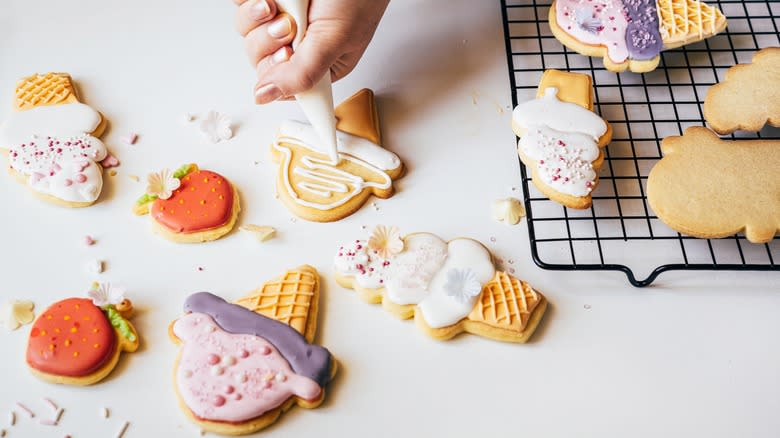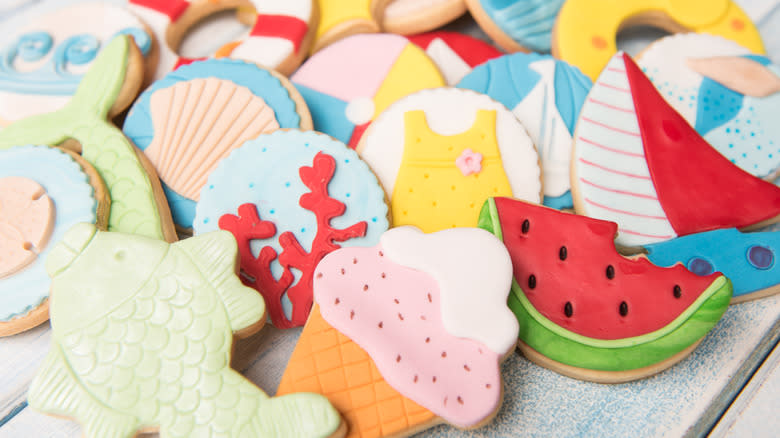The Importance Of An Icing Outline On Your Sugar Cookies

Sugar cookies, with their sweet simplicity and endless decorating possibilities, are a favorite canvas for creative bakers. If you're striving for a polished and neat finish, outlining the cookies with icing first is a game-changing technique. One of the challenges when decorating sugar cookies is dealing with icing overflow. When you apply icing directly onto the cookie's surface, it can easily spread and drip over the edges, leading to a messy and unrefined appearance. This is where outlining comes to the rescue.
An icing outline is like a protective barrier for your sugar cookies. It involves using a thicker consistency of icing to create a border around the edges before filling it in with a thinner icing. The outline acts as a dam, keeping the thinner icing within the designated area and preventing it from escaping over the edges. By confining the icing within the outline, you achieve that clean and polished look. The outline also provides definition to your design, allowing you to create intricate patterns and shapes with precision.
Read more: 25 Chocolate Brands, Ranked Worst To Best
How To Use Two Different Types Of Icing

In the world of cookie decorating, there are two primary consistencies of icing often used: piping icing and flood icing. Piping icing has a thicker consistency, similar to toothpaste. It is ideal for outlining and adding fine details to your cookies since it holds its shape well and doesn't flow. Flood icing, on the other hand, is thinner and more fluid, with a consistency similar to syrup. It's perfect for filling in large areas of your cookies after the outline is in place. Flood icing levels out smoothly for a glossy finish.
When it comes to outlining sugar cookies, piping icing is your best friend. To use piping icing effectively, you can transfer it into a piping bag fitted with a fine tip or simply snip a small corner from a plastic zip-top bag. With steady hands, follow the contours of your cookies, creating an outline that will guide your flood icing. If you are working with a larger cookie, you might consider using a larger icing tip to more easily outline it. Additionally, if you need to create more outlines for details within the interior of the cookie, you can trace these lines onto the cookie with an edible marker. Next, go over those lines with piping icing at the same time as outlining the cookie.
Read the original article on Tasting Table.

